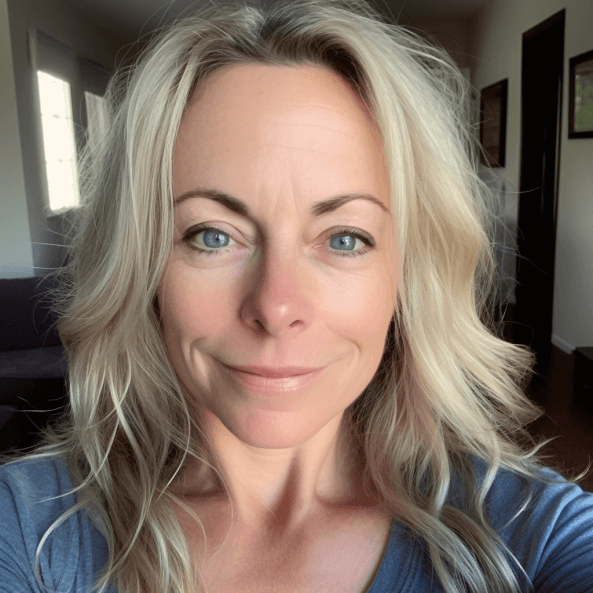Ever found yourself struggling to separate solids from liquids in your lab work? If so, you’re not alone. Many people face this challenge and often turn to vacuum filtration for a quick and efficient solution.
Key Takeaways
- Efficient Solid-Liquid Separation: Vacuum filtration is an effective method for rapidly separating solids from liquids, ideal for lab work and DIY projects.
- Essential Equipment: Key components include a Buchner funnel, filter paper, vacuum flask, vacuum pump, and a suction trap to ensure smooth operation.
- Step-by-Step Process: Proper setup involves preparing materials, assembling the apparatus, and conducting the filtration with attention to detail for optimal results.
- Common Applications: This technique is frequently used in precipitation reactions, solution clarification, and various hobbyist projects.
- Safety First: Always wear personal protective equipment (PPE) and ensure proper ventilation to mitigate risks while performing vacuum filtration.
Understanding Vacuum Filtration
Vacuum filtration efficiently separates solids from liquids using a vacuum source to expedite the process. It’s commonly applied in laboratories for purifying substances, especially when dealing with precipitates or separating particulates from solvents.
Components of Vacuum Filtration
- Buchner Funnel: This funnel features a flat base with small holes, allowing liquid to pass through while retaining solids.
- Filter Paper: Specific types of filter paper fit into the Buchner funnel, effectively catching solid particles while letting liquid flow through.
- Vacuum Flasks: Vacuum flasks collect filtered liquid. They connect to the funnel and create a vacuum that assists in drawing the liquid down.
- Vacuum Source: A pump or aspirator generates the vacuum needed for filtration.
Process of Vacuum Filtration
- Setup: Place the filter paper in the Buchner funnel, ensuring it matches the funnel’s size.
- Connect the Flask: Attach the Buchner funnel to the vacuum flask with a rubber stopper to prevent air leaks.
- Wet the Filter: Moisten the filter paper slightly with the liquid you’re filtering to ensure it adheres properly.
- Start the Vacuum: Turn on the vacuum source, checking for any leaks in connections.
- Add the Mixture: Pour the mixture of solids and liquids into the funnel. The vacuum will pull the liquid through, leaving solid residues on the filter paper.
Common Applications
- Precipitation Reactions: Often used to collect products formed during chemical reactions.
- Clarification Processes: Suitable for clarifying solutions in various experiments.
- Hobbyist Projects: Sometimes utilized in home brewing or DIY chemistry applications.
Safety Considerations
- Wear Personal Protective Equipment (PPE): Always use gloves and eye protection to safeguard against spills.
- Handle with Care: Be cautious with glassware to avoid breakage.
- Ventilation: Ensure proper lab ventilation, especially if dealing with volatile substances.
Key Takeaways
Understanding vacuum filtration simplifies the process of separating solids from liquids. With the right equipment and careful execution, you can achieve efficient filtration in your laboratory or DIY projects.
Necessary Equipment for Vacuum Filtration
Setting up vacuum filtration requires specific equipment to ensure efficient separation of solids from liquids. Below are the essential components you’ll need for a successful vacuum filtration setup.
Filtration Apparatus
- Buchner Funnel: Use a Buchner funnel to hold the filter paper and aid in solid-liquid separation. This funnel has a flat bottom and a perforated surface for better filtration efficiency.
- Filter Paper: Choose filter paper with an appropriate pore size for your application. Standard options include whatman paper or other commercial filters, depending on the particle size you’re dealing with.
- Ring Stand: Secure the Buchner funnel using a ring stand for stability. This setup allows for proper alignment with the collection flask.
Vacuum Source
- Vacuum Pump: Use a vacuum pump to create the necessary suction. A diaphragm pump or rotary vane pump will work well for laboratory filtrations.
- Suction Trap: Incorporate a suction trap to prevent backflow into the pump. This adds a layer of protection for your equipment and ensures a clean filtration process.
- Vacuum Gauge: Monitor the pressure using a vacuum gauge. This tool ensures that you maintain optimal suction levels throughout the filtration.
- Vacuum Flask: Use a vacuum flask to collect the filtrate. Ensure it’s durable and designed to withstand vacuum conditions.
- Sealing: Make sure the collection flask has a tight seal. This prevents air leaks, which can compromise filtration efficiency.
- Filtering Capacity: Select a flask with appropriate capacity based on your sample volume. Standard sizes include 250 mL, 500 mL, and 1 L flasks.
Gathering the necessary equipment helps streamline the filtration process. It ensures you achieve effective separation with minimal hassle.
Step-by-Step Guide to Setting Up Vacuum Filtration
Setting up vacuum filtration requires careful preparation and assembly. Follow these steps to ensure a smooth filtration process.
Preparing the Materials
Gather all necessary materials before starting. You’ll need:
- Buchner Funnel: This funnel sits in a filtration flask and holds the filter paper.
- Filter Paper: Select the appropriate size for your Buchner funnel, usually measured in diameter. Ensure it fits snugly.
- Vacuum Flask: Choose a flask capable of withstanding negative pressure to collect the filtered liquid.
- Vacuum Pump: This pump creates the suction for the filtration. A diaphragm pump or a rotary vane pump works well.
- Suction Trap: Use this component to prevent any liquid from reaching the vacuum pump.
- Vacuum Gauge: Monitor the vacuum pressure during filtration for optimal performance.
- Ring Stand: Support your apparatus with a ring stand and clamp for stability.
Preparing well ensures everything you need is close at hand, making the process efficient.
Assembling the Apparatus
Assemble your apparatus securely. Follow these steps:
- Position the Vacuum Flask: Place the flask on a stable surface to avoid spills.
- Attach the Buchner Funnel: Secure the funnel to the top of the vacuum flask using a rubber stopper or fitting.
- Insert the Filter Paper: Place the filter paper into the funnel. Moisten it with a small amount of solvent to help it adhere.
- Connect the Vacuum Pump: Attach the vacuum line from the pump to the vacuum flask’s sidearm. Ensure a tight fit to prevent leaks.
- Set Up the Suction Trap: If using, position it between the vacuum flask and the pump to safeguard against overflow.
Follow these assembly steps to ensure the vacuum filtration setup operates smoothly.
Conducting the Filtration Process
Begin the filtration process by following these steps:
- Turn on the Vacuum Pump: Activate the vacuum pump before adding your mixture. This prevents pressure fluctuations.
- Add the Mixture: Gradually pour your mixture into the Buchner funnel, taking care not to exceed the filter paper’s capacity.
- Monitor the Filtration: Observe the liquid flowing into the flask. Adjust the vacuum pressure if necessary for optimal flow.
- Switch Off the Pump: Once filtration is complete, turn off the vacuum pump. Remove the funnel carefully to avoid spills.
Conducting these steps ensures efficient filtration and separation of solids from liquids.
Troubleshooting Common Issues
When using vacuum filtration, various issues can arise. Identifying and resolving these problems leads to efficient filtration.
Incomplete Filtration
Incomplete filtration often results from improperly placed filter paper. Make sure the filter paper fits snugly within the Buchner funnel without any significant gaps. Using the wrong type of filter paper can also hinder the process; select the appropriate pore size based on the solids being filtered. If the vacuum pressure is low, check the vacuum pump and connections for blockages or leaks. Connecting a vacuum gauge helps monitor pressure levels, ensuring adequate suction throughout the process.
Leaks in the System
Leaks in the vacuum filtration system can disrupt the filtration process. First, inspect all connections, focusing on the seals between the vacuum flask and funnel. Use appropriate vacuum grease on the seals if necessary. Ensure that the tubing connecting the vacuum source to the flask is intact and free from cracks or holes. Tightening loose connections can eliminate potential leaks. Additionally, consider using a suction trap to capture any liquid that may accidentally escape, protecting your vacuum pump from damage.
Conclusion
Setting up a vacuum filtration system can make your lab work much more efficient. By following the steps outlined and keeping an eye on potential issues you can ensure a smooth process every time.
Remember to double-check your connections and maintain the right vacuum pressure for optimal results. With practice you’ll become more comfortable with the setup and troubleshooting.
Embrace the benefits of vacuum filtration and watch as your solid-liquid separations become quicker and more effective. Happy filtering!
Frequently Asked Questions
What is vacuum filtration used for?
Vacuum filtration is used in laboratory settings to separate solids from liquids efficiently. It is particularly useful for obtaining pure solid samples and for filtering solutions.
What equipment is needed for vacuum filtration?
Essential equipment includes a Buchner funnel, filter paper, vacuum flasks, and a vacuum source. Each is crucial for successfully conducting the filtration process.
How do you set up vacuum filtration?
To set up vacuum filtration, prepare your materials, assemble the apparatus by connecting the Buchner funnel to the vacuum source, and position the filter paper properly.
What safety precautions should be taken?
Always wear appropriate personal protective equipment, such as gloves and goggles, and ensure proper ventilation. Handle glassware carefully to avoid breakage and spills.
What are common issues with vacuum filtration?
Common issues include incomplete filtration and leaks. These can often be resolved by checking the filter paper placement, inspecting connections, and ensuring proper vacuum setup.
How can you troubleshoot incomplete filtration?
To troubleshoot incomplete filtration, verify the filter paper’s placement and pore size, ensure adequate vacuum pressure, and check for leaks in the system.
What is the role of filter paper in vacuum filtration?
Filter paper is critical in vacuum filtration as it traps solids while allowing liquids to pass through. The type of filter paper selected affects the filtration efficiency.
How do you maintain a smooth vacuum filtration process?
Maintain a smooth vacuum filtration process by using vacuum grease on connections to prevent leaks, ensuring tubing integrity, and utilizing a suction trap to catch any overflow.


